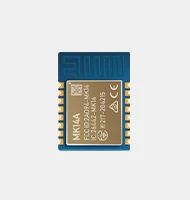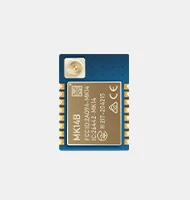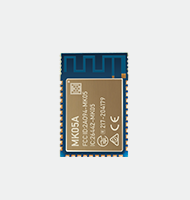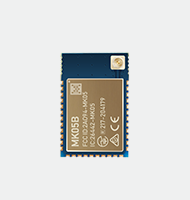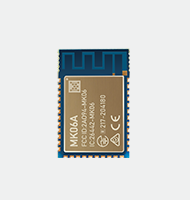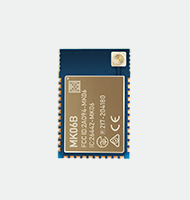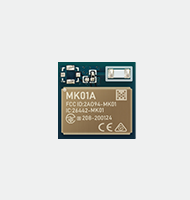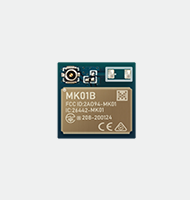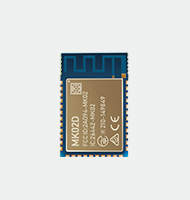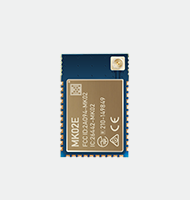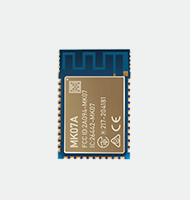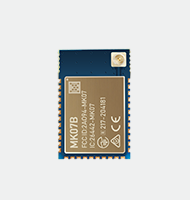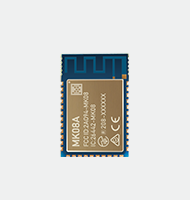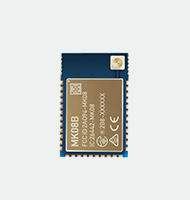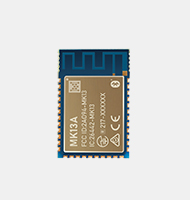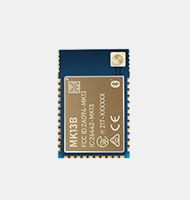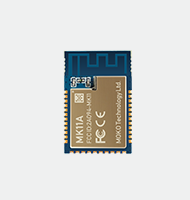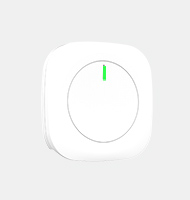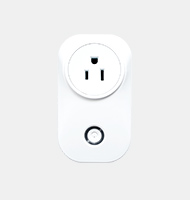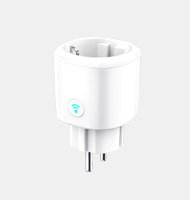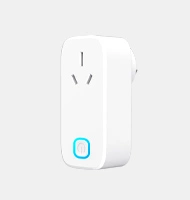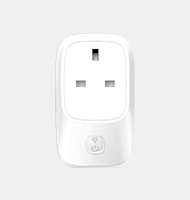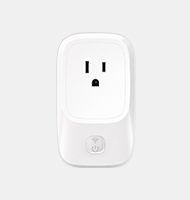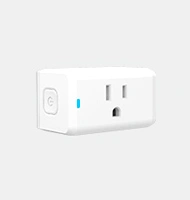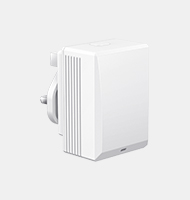Step into the exhilarating realm of our rapidly advancing technological landscape, where an array of wireless communication technologies have sprung to life, catering to diverse applications. In the realm of the Internet of Things (IoT), three standout technologies—BLE, RFID, and UWB—have emerged as versatile tools. This blog will provide an overview of these three technologies, discuss the key differences of BLE vs RFID vs UWB, explore their different use cases, and ultimately help determine which one might be better suited for specific applications.
An overview of BLE, RFID and UWB
Before delving into the differences of BLE vs RFID vs UWB, let’s take a look at each of the three wireless technologies and how they work.
What is BLE
BLE, short for Bluetooth Low Energy, is a wireless communication technology specifically created for short-range interactions. It was introduced as part of Bluetooth 4.0 in 2011, with a primary focus on optimizing power usage.
Unlike traditional Bluetooth, BLE has gained widespread adoption in the Internet of Things (IoT) domain due to its energy-efficient nature. It facilitates swift data transfer while minimizing power consumption, making it an ideal choice for devices that operate on low power. Additionally, BLE operates within the same radio wavebands as Bluetooth and enables data exchange between two devices using similar methods.
What is RFID
RFID, which stands for Radio Frequency Identification, is a technology that utilizes radio waves to wirelessly identify and track objects or individuals. It consists of two main components: a tag and a reader. RFID tags are attached to objects, and an RFID reader reads the signals sent from the tags. RFID technology operates on different frequency bands, depending on the type of tags used.
When the RFID tag enters into the range of the reader’s radio waves, it receives power and sends back its unique identifier. The reader captures this information and processes it, enabling businesses to automate inventory management, track assets, and streamline supply chain operations.
What is UWB
UWB (Ultra-Wideband) is a short-range wireless communication technology that utilizes short pulse radio waves to precisely determine the position and distance between objects. By transmitting these pulses across a wide frequency spectrum, UWB-enabled devices can analyze and measure the Time of Flight (ToF), enabling accurate location information.
With its wide frequency spectrum, UWB enables high bandwidth connections. Its precise localization and tracking capabilities make UWB well-suited for applications such as indoor positioning and asset tracking.
BLE vs RFID vs UWB: feature-by-feature comparison
BLE, RFID, and UWB are distinct wireless communication standards. Let’s examine their similarities and differences in order to gain a better understanding of these protocols.
Frequency band
BLE typically operates in the 2.4 GHz band, which is the same frequency used by WiFi and many other wireless devices. RFID can operate in low-frequency (125 – 134 kHz), high-frequency (13.56 MHz), or ultra-high-frequency (860 – 956 MHz) bands depending on the region and application. UWB operates in a wide frequency ranging from 3.1 GHz to 10.6 GHz.
Transmission range
BLE is designed for short-range communication, typically reaching up to around 100 meters. RFID spans varying ranges, with a few centimeters to several meters based on the frequency band employed. UWB excels in detecting device location and operates effectively within a range of under 200 meters, particularly in shorter distances ranging from 1 to 50 meters.
Data rate
BLE offers moderate data rates up to around 2 Mbps, RFID data rates vary depending on the frequency band with LF and HF systems typically ranging from a few Kbps to tens of Kbps, and UWB provides higher data rates up to 1 Gbps.
Accuracy
BLE offers limited accuracy within a few meters, RFID accuracy varies depending on the frequency band ranging from a few centimeters to a few meters, and UWB provides high accuracy within a range of a few centimeters to a few meters, making it suitable for precise location determination.
Communication way
BLE utilizes bidirectional communication for data exchange, RFID typically follows a unidirectional communication method from tags to readers, and UWB employs bidirectional communication using short-duration pulses for precise positioning and data transmission.
Cost
BLE generally offers a cost-effective solution due to its widespread adoption and availability of affordable devices. RFID costs vary depending on the frequency band and system complexity. UWB, being a more specialized technology, may involve higher upfront costs depending on the application requirements.
| BLE | RFID | UWB | |
| Standard | IEEE 802.15.1 | ISO/IEC/IEEE 21451-7:2011 | IEEE 802.15.4 (802.15.4a/802.15.4z) |
| Frequency | 2.400 to 2.480 GHz | Sub GHz bands viz. LF (125 – 134 KHz), HF (13.56 MHz) and UHF (860 – 956 MHz) | 3.1 GHz to 10.6 GHz |
| Range/Coverage | Up to 100m | 1 – 5m | Up to 200m |
| Data rate | Up to 2 Mbps | a few Kbps to tens of Kbps | Up to 1 Gbps |
| Accuracy | In several meters | In centimeters to 1 meter | In centimeters |
| Directional communication | Two way | One way | Two way |
| Infrastructure, tag and maintenance cost | Low | Low | High |
Pros and cons of BLE, RFID, and UWB for asset tracking
The distinctive features of BLE vs RFID vs UWB give rise to their respective advantages and limitations. Here is an overview of the key strengths and limitations of each technology:

Advantages and Limitations of BLE (Bluetooth Low Energy)
- Advantages of BLE
Low power consumption: BLE is designed to be energy-efficient, enabling devices to operate on small batteries for prolonged periods of time.
Wide compatibility: BLE is supported by a wide range of devices, ensuring seamless connectivity and communication.
Simple and cost-effective implementation: BLE is easy to implement and requires minimal hardware, making it a cost-effective solution.
Fast data transfer: BLE supports fast data transfer rates, enabling real-time communication and quick updates.
- Limitations of BLE
Limited range: BLE has a shorter communication range compared to other wireless technologies.
Lower data transfer capacity: BLE is not suitable for applications requiring high data throughput or large file transfers.
Interference from other devices: BLE connections can be affected by interference from devices operating on the same frequency.
Advantages and Limitations of RFID (Radio Frequency Identification)
- Advantages of RFID
Contactless operation: RFID technology enables contactless identification and tracking, eliminating the requirement for physical contact or line-of-sight scanning.
Fast and automated data capture: RFID enables quick and automated data capture, facilitating high-speed identification and tracking.
Durability and reusability: RFID tags are often durable and can be reused multiple times, reducing overall ownership costs.
Wide range of applications: RFID technology finds applications in diverse industries, such as retail, logistics, and healthcare.
- Limitations of RFID
Limited read range: RFID systems have a restricted read range, limiting their usability for long-distance reading.
Interference and signal reflection: RFID signals can be affected by interference and reflection from other devices or materials.
Higher implementation costs: Initial implementation costs for RFID systems can be higher compared to other identification technologies.
Security and privacy concerns: RFID systems may pose security risks, requiring measures such as encryption and access control.
Advantages and Limitations of UWB (Ultra-Wideband)
- Advantages of UWB
High data transfer rates: UWB enables fast and efficient wireless communication, supporting multimedia streaming and real-time positioning systems.
Accurate ranging and localization: UWB provides precise ranging and localization capabilities, facilitating accurate object positioning and tracking.
Low power consumption: UWB devices consume relatively low power, leading to longer battery life and increased operational efficiency.
Resistance to interference: UWB is less susceptible to interference, resulting in more reliable and robust communication.
- Limitations of UWB
Shorter range: UWB signals have a limited range, making them less suitable for long-range applications.
Regulatory restrictions: UWB technology is subject to regulatory restrictions in some regions, affecting its adoption and implementation.
Complex implementation: Implementing UWB technology may require complex integration of hardware and software components.
Limited market adoption: UWB technology has limited market adoption compared to other wireless technologies, resulting in a smaller ecosystem of compatible devices and solutions.
Different use cases of BLE, RFID, and UWB
Since BLE, RFID, and UWB come with different advantages and capabilities, they are born for different use cases. The following will show you some of the most common use cases of each technology.
Applications of Bluetooth Low Energy (BLE)
BLE is commonly used in various applications that require short-range wireless communication with low power consumption.
- Wearable Devices: BLE is widely used in fitness trackers, smartwatches, and other wearable devices to connect with smartphones and transmit data such as heart rate, steps taken, and notifications.
- Home Automation: With BLE, smart home devices like thermostats, lighting systems, and door locks can establish communication among themselves and be conveniently controlled through a central hub or smartphone application.
- Asset Tracking: BLE beacons are widely used for indoor positioning and asset tracking. They can be placed on valuable items, in retail stores for proximity marketing, or in warehouses to track inventory.
- Health Monitoring: BLE is utilized in medical devices for remote patient monitoring, allowing healthcare professionals to collect and analyze data such as blood glucose levels, blood pressure, and temperature.
Applications of RFID (Radio Frequency Identification)
RFID is popular in scenarios requiring swift and accurate identification and tracking.
- Supply Chain Management: RFID tags are attached to products, enabling real-time tracking of inventory, improving supply chain visibility, and reducing errors in logistics and inventory management.
- Access Control: RFID cards or key fobs are used for secure access control in buildings, parking lots, and gated communities. They provide an efficient way to authenticate and grant access to authorized individuals.
- Retail and Inventory Management: RFID tags on retail items enable quick and accurate inventory management, reducing stock-outs and improving the shopping experience by enabling faster checkouts and reducing the need for manual scanning.
- Livestock Tracking: RFID ear tags or implants are used to track and monitor livestock, enabling farmers to manage and monitor their animals’ health, location, and breeding information.
Applications of Ultra-Wideband (UWB)
UWB technology enables precise positioning and high-speed data transfer over short distances.
- Real-Time Location Systems (RTLS): UWB is used for indoor positioning systems, enabling accurate tracking of assets, personnel, and vehicles in environments such as warehouses, hospitals, and manufacturing facilities.
- Contactless Payments: UWB can enhance secure mobile payment systems by providing precise proximity detection and authentication, enabling seamless transactions without physical contact.
- Augmented Reality (AR): UWB can be used in AR applications to accurately track the position and movement of objects or people in real-time, creating immersive and interactive experiences.
BLE vs. RFID vs. UWB: which is better?
Determining which technology is better depends on the specific requirements of your application. Consider factors such as range, data rate, cost, and the environment in which the tracking will take place.
BLE is well-suited for low-power, short-range connectivity, making it an excellent choice for personal devices and smart home applications. RFID excels in asset tracking and access control scenarios, providing efficient inventory management and secure access authentication. UWB offers highly accurate positioning and high-speed data transfer, making it valuable for applications that require precise location tracking and fast communication.
FAQs about BLE, RFID, and UWB
Q1: Can BLE, RFID, and UWB be used together?
It’s possible to combine RFID and BLE to get an optimal solution for tracking both people and assets. UWB can also work in conjunction with RFID if more precise location data is needed.
Q2: Are these technologies secure?
All three technologies have security measures to protect data, but RFID and BLE are more prone to security vulnerabilities such as spoofing and eavesdropping than UWB.
Q3: Can RFID tags be reused?
Passive RFID tags are generally not reusable, whereas active RFID tags can be reused multiple times.
Q4: How much do these tags cost?
BLE tags typically cost $10-35, RFID tags range from $25-70 and more, and UWB tags are generally priced between $50-100. Prices can vary depending on different features and quantities.
Q5: Which technology is best for RTLS?
UWB technology is commonly preferred for Real-Time Location Systems (RTLS) because of its high precision and accuracy in tracking and positioning. However, BLE is also popular due to its low energy consumption and cost-effectiveness. The decision between UWB and BLE relies on the specific demands and preferences of the RTLS application.
